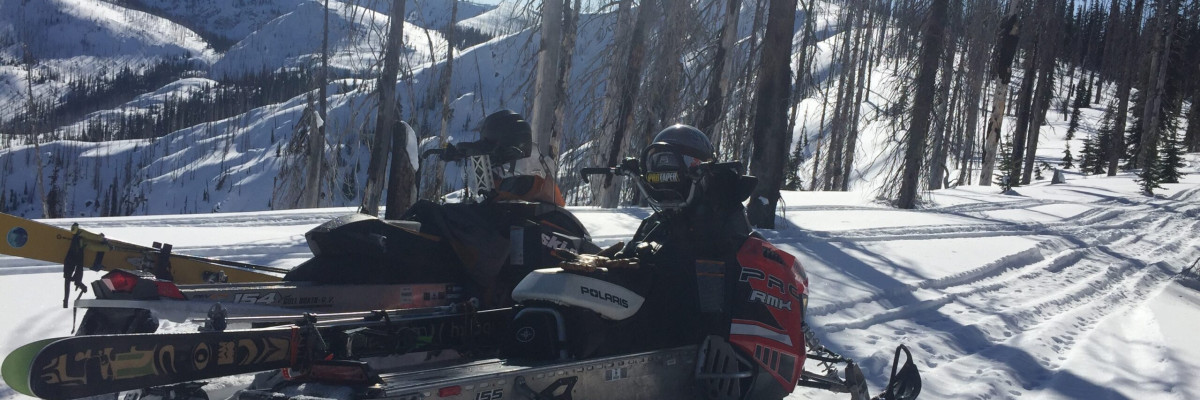The current avalanche danger is MODERATE in the west central Montana backcountry. Human triggered avalanches are possible. Heightened avalanche conditions exist in isolated terrain. Evaluate snow and terrain carefully and identify features of concern.
Good morning, this is Travis Craft with the West Central Montana Avalanche Center’s avalanche advisory for February 27, 2016. This danger rating does not apply to operating ski areas, expires at midnight tonight and is the sole responsibility of the U.S. Forest Service.
Weather and Snowpack
Mountain temperatures range from 32 F to 40 F in the region. Most sites did not get below freezing last night. Winds are 5 mph with gusts of 6 mph out of the WNW in the Bitterroot and Point Six in the northern part of the advisory area is 24 mph with gusts of 31 mph. The forecast area received 1 to 2 inches of new snow in the last 24 hours. Snotels are reporting .20 and .40 SWE in the region.
Logan and I toured in the Lolo Pass area yesterday on sleds. It was spring. Today a warm system is pushing into the advisory area. This will bring precipitation and strong winds. The snow level will start around 6500 feet and then slowly drop to around 4500 feet. The question will be how the new snow bonds to the the old snow surfaces? On solar aspects we have a melt freeze crust and on some leeward slopes we have old windslabs. Logan and I found broken down surface hoar on our tour. In higher elevations on shadier aspects, the surface hoar may not have been broken down and may be buried by the new snow.
The first avalanche problem will be loose dry or wet avalanches depending on elevation. These should not be very large but can be a problem if you are knocked of your feet and carried into a terrain trap(tree, cliff, or gully).
The second avalanche problem will be windslabs. Leeward terrain will be suspect. These windslabs will be deposited on a variety of old snow surfaces(melt freeze crust, old wind slabs, cold snow on north aspects).
The last avalanche problem is cornice failure. Cornices have been weakening over the last couple of days and with continued warm temperature and new loading will continue to lose strength . Give cornices a wide berth, they break farther back then anticipated.
There are still some facets and the graupel sitting above a melt freeze crust to be found in our snowpack. These layers have not propagated in any of our tests recently, but with a new load may become reactive. Dig a pit and find out what is under your feet on the slope you are choosing to recreate on.
Weather and Avalanche Outlook
This system is expected to last till Sunday. The snow levels will drop over the weekend to 4500 feet. In the mountains snow totals will be around 2 to 6 inches. This system is warm and the snow will be wet and heavy. This system has high winds with it. The avalanche hazard will increase with the addition of new snow and high winds.
Thank you to everyone who has sent public observations in. If you see something out there, please send us a public observation.
Ski and ride safe. Logan will issue the next advisory on Tuesday.














